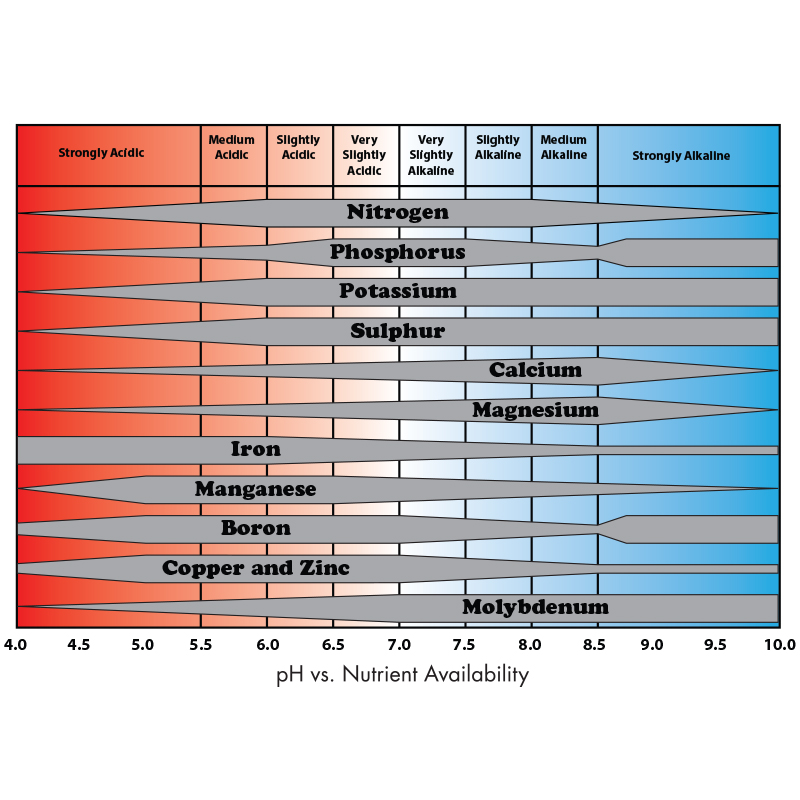
Lawn Care Tips: Adjusting Soil Chemistry
The science of soil figures heavily into professional lawn maintenance, but that doesn’t mean you can’t become an expert yourself if you have the right lawn care tips. Two terms every budding soil scientist should plant in their knowledge bank are CEC (cation-exchange capacity) and soil pH (power or potential of hydrogen).
Using Science to Increase Soil Nutrients
Both CEC and pH levels affect your soil’s ability to supply nutrients to your lawn. Learning how to match the proper turf grass species to your soil, or how to adjust pH levels during routine lawn maintenance, can help you increase the reservoir of nutrients your lawn has available. This helps your grass grow and develop into a lawn truly worth enjoying.
What Is the Cation-Exchange Capacity in Soil?
Supporting turf grass growth and development by acting as a constant supply of nutrients is one of soil’s most critical functions. Turf grass pulls these nutrients from the soil using organic matter and particles on the surface of the soil, otherwise known as exchange sites.
The CEC of the soil is just a way to measure how many nutrient exchange sites your soil has. Higher-CEC soils have a higher capacity to exchange nutrients, so they are more fertile than lower-CEC soils. Because clay soils have a higher CEC than sandy soils, clay soils hold and provide nutrients better.
The Importance of Soil pH on Plant Growth
The alkalinity or acidity of soil is measured by the soil’s pH number using a scale of 1.0 to 14.0, with 7.0 as the neutral mark. Pure water has a pH of 7.0, so it’s considered neutral. Any pH below 7.0 is considered an acid soil, and any pH above 7.0 is considered an alkaline soil.
Acid soils are often referred to as “sour” and alkaline soils as “sweet,” and both require different lawn maintenance approaches. Most species of turf grass do best with a slightly acidic soil pH—anything from 6.0 to 7.0—because this range provides the most available nutrients for growing plants. Nutrient availability changes with soil pH, as seen in the chart below:

Lawn Care Tips for Acid Soils
Soils with a pH below 7.0 are acid soils. They’re typically found in the Pacific Northwest, along the East Coast and in southeastern states. The lower pH reduces microorganism activity, so thatch can quickly become problematic. If soil acid pH is below 5.0, it can be detrimental to turf grass growth. Basic lawn care tips consist of:
- Using a thatching rake in one direction only, so as not to damage grass roots
- Spreading lime, a crushed or granulated calcium carbonate, to raise soil pH
- Calculating the proper amount of lime usage based on your soil’s pH reading
- Following average lime maintenance levels ranging between 15 and 20 pounds per 1,000 square feet per year and generally not exceeding 25 to 50 pounds
Lawn Maintenance Tips for Alkaline Soils
Soils with a pH greater than 7.0 are alkaline soils. These soils typically have a higher clay content, don’t drain well and can also be found in areas where irrigation water has higher percentages of calcium or magnesium. High-pH lawns may be lacking micronutrients and often resist pH adjustments because they’re highly buffered—especially those with a pH above 8.0.
- Treat micronutrient-deficient lawns with iron, manganese, copper, zinc or boron.
- Lower pH by using sulfur or acidifying fertilizers (e.g., ammonium sulfate or iron sulfate), but note that change will be slow and results are rarely visible.
How to Treat Saline Soils for Lawn Health
Although it’s not a widespread lawn maintenance issue, in certain parts of the Southwest and coastal regions, excessive soluble salt amounts in your soil can destroy the quality of your turf grass. These are called saline soils and are high in calcium, magnesium or sodium salts.
Flush saline soils out with large amounts of low-salt water to recover your soil’s balance. If your soil has a pH over 8.5 and is high in sodium, it’s likely sodic soil. These compacted soils are found in arid parts of the western United States and have poor water infiltration—they typically require professional lawn maintenance treatments.







